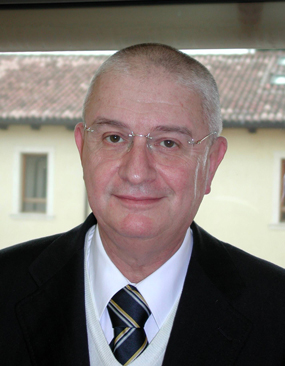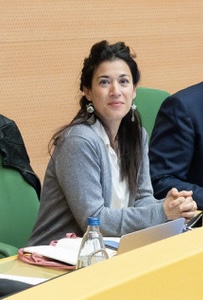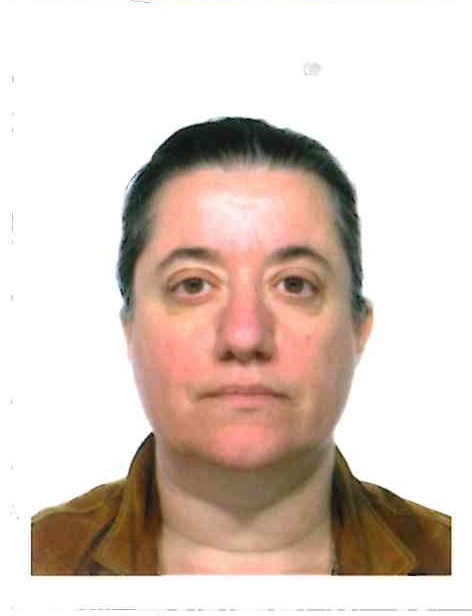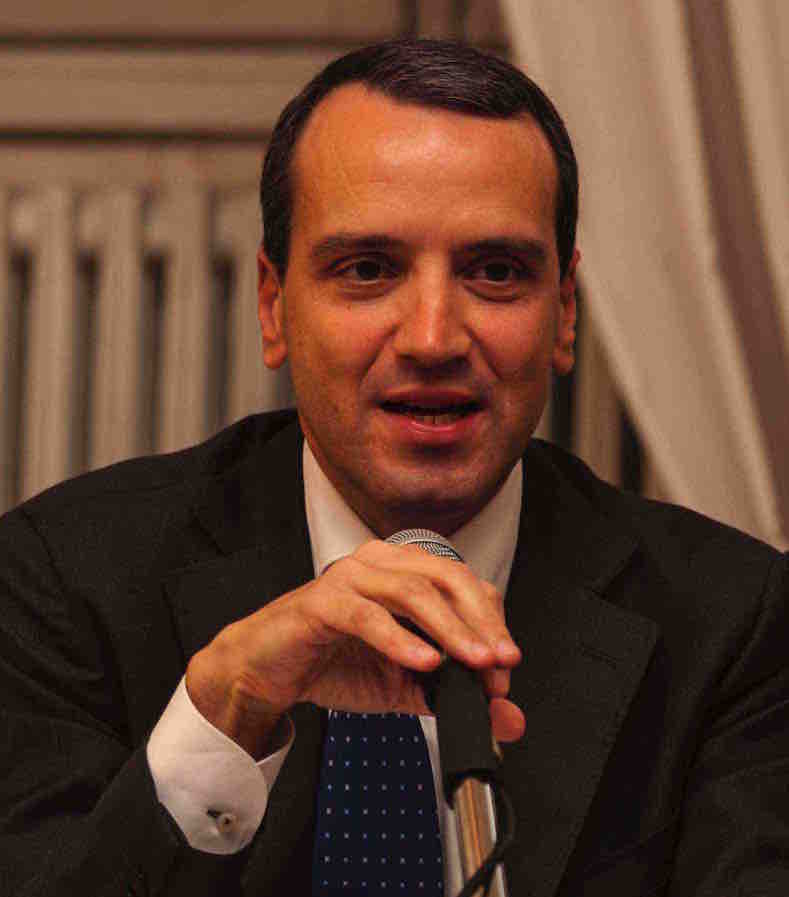Studying at the University of Verona
Here you can find information on the organisational aspects of the Programme, lecture timetables, learning activities and useful contact details for your time at the University, from enrolment to graduation.
Academic calendar
The academic calendar shows the deadlines and scheduled events that are relevant to students, teaching and technical-administrative staff of the University. Public holidays and University closures are also indicated. The academic year normally begins on 1 October each year and ends on 30 September of the following year.
Course calendar
The Academic Calendar sets out the degree programme lecture and exam timetables, as well as the relevant university closure dates..
| Period | From | To |
|---|---|---|
| 1° periodo di lezioni | Oct 3, 2016 | Dec 16, 2016 |
| Periodo riservato ad eventuali recuperi di lezioni - dicembre 2016 | Dec 17, 2016 | Dec 20, 2016 |
| 2° periodo di lezioni - febbraio/aprile 2017 | Feb 10, 2017 | Apr 10, 2017 |
| 2° periodo di lezioni - aprile/maggio 2017 | Apr 19, 2017 | May 9, 2017 |
| Periodo riservato ad eventuali recuperi di lezioni - maggio 2017 | May 10, 2017 | May 11, 2017 |
| Session | From | To |
|---|---|---|
| Sessione straordinaria 16/17 - studenti f.c. - dicembre 2016 | Dec 21, 2016 | Dec 23, 2016 |
| 1° appello - Sessione invernale 16/17 | Jan 10, 2017 | Jan 19, 2017 |
| 2° appello - Sessione invernale 16/17 | Jan 30, 2017 | Feb 8, 2017 |
| Sessione straordinaria 16/17 - studenti f.c. - aprile 2017 | Apr 11, 2017 | Apr 13, 2017 |
| 1° appello - Sessione estiva 16/17 | May 12, 2017 | May 22, 2017 |
| 2° appello - Sessione estiva 16/17 | Jun 8, 2017 | Jun 17, 2017 |
| 3° appello - Sessione estiva 16/17 | Jul 6, 2017 | Jul 15, 2017 |
| 1° appello - Sessione autunnale 16/17 | Aug 28, 2017 | Sep 6, 2017 |
| 2° appello - Sessione autunnale 16/17 | Sep 21, 2017 | Sep 30, 2017 |
| Session | From | To |
|---|---|---|
| Termine presentazione tesi di laurea - ottobre 2016 | Sep 23, 2016 | Sep 23, 2016 |
| Sessione autunnale - 15/16 | Oct 24, 2016 | Oct 25, 2016 |
| Termine presentazione tesi di laurea - febbraio 2017 | Jan 10, 2017 | Jan 10, 2017 |
| Sessione invernale - 15/16 | Feb 9, 2017 | Feb 9, 2017 |
| Termine presentazione tesi di laurea - marzo 2017 | Feb 24, 2017 | Feb 24, 2017 |
| Sessione invernale - marzo 2017 | Mar 29, 2017 | Mar 31, 2017 |
| Termine presentazione tesi di laurea - giugno 2017 | May 23, 2017 | May 23, 2017 |
| Sesssione estiva - 16/17 | Jun 26, 2017 | Jun 27, 2017 |
| Period | From | To |
|---|---|---|
| Festa di Ognissanti | Nov 1, 2016 | Nov 1, 2016 |
| Festa dell'Immacolata Concezione | Dec 8, 2016 | Dec 8, 2016 |
| Vacanze di Natale | Dec 24, 2016 | Jan 6, 2017 |
| Vacanze di Pasqua | Apr 14, 2017 | Apr 18, 2017 |
| Festa della Liberazione | Apr 25, 2017 | Apr 25, 2017 |
| Festa dei Lavoratori | May 1, 2017 | May 1, 2017 |
| Festa del Santo Patrono - San Zeno | May 21, 2017 | May 21, 2017 |
| Festa della Repubblica | Jun 2, 2017 | Jun 2, 2017 |
Exam calendar
Exam dates and rounds are managed by the relevant Law Teaching and Student Services Unit.
To view all the exam sessions available, please use the Exam dashboard on ESSE3.
If you forgot your login details or have problems logging in, please contact the relevant IT HelpDesk, or check the login details recovery web page.
Academic staff
 giovanni.alberti@univr.it
giovanni.alberti@univr.it

Dalla Massara Tommaso
 tommaso.dallamassara@univr.it
tommaso.dallamassara@univr.it
 +39 045 8028810
+39 045 8028810
 roberto.flor@univr.it
roberto.flor@univr.it
 rita.maggi@univr.it
rita.maggi@univr.it
 martina.menon@univr.it
martina.menon@univr.it

Patrono Paolo
 paolo.patrono@univr.it
paolo.patrono@univr.it
 +39 045 8028813
+39 045 8028813
 lorenzo.salvatore@univr.it
lorenzo.salvatore@univr.it
Strano Silvana
 silvana.stranoligato@univr.it
silvana.stranoligato@univr.it
 +39 045 8028856
+39 045 8028856
 claudio.tomazzoli@univr.it
claudio.tomazzoli@univr.it
 marcella.veronesi@univr.it
marcella.veronesi@univr.it
Study Plan
The Study Plan includes all modules, teaching and learning activities that each student will need to undertake during their time at the University.
Please select your Study Plan based on your enrollment year.
1° Year
| Modules | Credits | TAF | SSD |
|---|
Foreign language2° Year activated in the A.Y. 2017/2018
| Modules | Credits | TAF | SSD |
|---|
3° Year activated in the A.Y. 2018/2019
| Modules | Credits | TAF | SSD |
|---|
| Modules | Credits | TAF | SSD |
|---|
Foreign language| Modules | Credits | TAF | SSD |
|---|
| Modules | Credits | TAF | SSD |
|---|
Legend | Type of training activity (TTA)
TAF (Type of Educational Activity) All courses and activities are classified into different types of educational activities, indicated by a letter.
Principles of economics (2017/2018)
Teaching code
4S00328
Academic staff
Coordinator
Credits
9
Language
Italian
Scientific Disciplinary Sector (SSD)
SECS-P/01 - ECONOMICS
Period
1° periodo di lezioni dal Oct 2, 2017 al Dec 15, 2017.
Learning outcomes
The course aims to provide students with the main notions about the functioning of markets (micro perspective) and the economic system of a country as a whole (macro perspective). Starting from the description of the theoretical model of perfect competition, we will analyze the main causes of market inefficiency. Students will be able to distinguish the main causes of “market failures”: market power, imperfect information, strategic interaction, the presence of externalities, and public goods. The course will then present the main policies to restore market efficiency and improve the welfare of individuals. From the macroeconomic perspective, we will introduce basic concepts for such as GDP, the role of the foreign sector, aggregate demand and supply with a particular emphasis on fiscal and monetary policies.
Program
First part: Market, efficiency and public policy
1-Consumer choice, individual demand, and market demand.
2-Profit maximization and cost functions.
3-Partial and general equilibrium.
4-Welfare economics theorems.
5-Market failures: market power and antitrust policies.
6-Externalities, public goods, and imperfect information.
7-The aggregation of preferences and social welfare.
Second part: Macroeconomic policies
1-Definition of key concepts (GDP).
2-Goods and financial markets: The IS-LM model.
3-The labor market.
4-The model of aggregate demand and supply.
5-Economic policies in closed and open economy.
The teaching material will be available on the e-Learning website (Moodle). All students are requested to register to e-Learning and download the teaching material.
| Author | Title | Publishing house | Year | ISBN | Notes |
|---|---|---|---|---|---|
| Krugman, P.; R. Wells | L’Essenziale di Economia | Zanichelli | |||
| DARON ACEMOGLU, DAVID LAIBSON, JOHN A. LIST | PRINCIPI DI ECONOMIA POLITICA. Teoria ed evidenza empirica | Pearson | 2016 | 9788891901071 | |
| BLANCHARD O. | Scoprire la macroeconomia I. Quello che non si può non sapere | Il Mulino | 2016 |
Examination Methods
Written exam with open questions and exercises, and a possible oral examination.
Teaching materials e documents
-
 programma e testi consigliati (ita/engl)
(octet-stream, it, 17 KB, 27/07/17)
programma e testi consigliati (ita/engl)
(octet-stream, it, 17 KB, 27/07/17)
Type D and Type F activities
Le attività che consentono l’acquisizione dei crediti riservati alle attività formative a libera scelta dello studente (TAF D) sono le seguenti:
• Un insegnamento previsto nell’elenco delle attività formative (TAF D) allegato al piano didattico del corso di laurea in Scienze dei servizi giuridici;
• Un insegnamento attivato nei Corsi di studi afferenti al Collegio di Giurisprudenza;
• Un laboratorio didattico attivato nei Corsi di studi afferenti al Collegio di Giurisprudenza;
• Un laboratorio didattico attivato nei Corsi di studi afferenti al Dipartimento di Scienze Giuridiche;
• Un insegnamento previsto dall’Offerta Formativa di Ateneo, non impartito nell’ambito dei corsi di studi afferenti al Collegio di Giurisprudenza: il riconoscimento dei crediti acquisiti sarà subordinato alla preventiva presentazione di coerenti programmi formativi valutati dalla Commissione istruttoria per la didattica e approvati dal Collegio didattico.
• Attività formative organizzate dai singoli docenti del Collegio di Giurisprudenza o del Dipartimento di Scienze Giuridiche: previa approvazione del Collegio ad esse verrà attribuito, dopo un’apposita verifica, un credito per ogni 6 ore di frequenza obbligatoria;
• Attività formative che implicano la partecipazione a convegni o seminari organizzati sotto il “logo” del Dipartimento di Scienze Giuridiche o dell’Ateneo: devono essere preventivamente approvate dal Collegio di Giurisprudenza indicando un docente di riferimento del Collegio di Giurisprudenza ovvero del Dipartimento di Scienze Giuridiche. Un credito per ogni giornata di convegno o di seminario si acquisisce dopo apposita verifica che dimostri l’avvenuta fruizione culturale del tema del convegno o del seminario.
Le attività che consentono l’acquisizione dei crediti riservati alle ulteriori attività formative (TAF F) sono le seguenti:
• Informatica (3 cfu)
• Stage;
• Un laboratorio didattico attivato nei Corsi di studi afferenti al Collegio di Giurisprudenza;
• Un laboratorio didattico attivato nei Corsi di studi afferenti al Dipartimento di Scienze Giuridiche.
Al link https://www.univr.it/it/i-nostri-servizi/segreterie-studenti/giurisprudenza#categdoc_7103 la modulistica per l'inserimento di attività non selezionabili in autonomia dallo studente in sede di compilazione del piano degli studi.
| years | Modules | TAF | Teacher |
|---|---|---|---|
| 2° 3° | International arbitration law | D |
Annalisa Ciampi
(Coordinator)
|
| 2° 3° | Civil enforcement law | D |
Alberto Maria Tedoldi
(Coordinator)
|
| 2° 3° | Family Law | D |
Alessandra Cordiano
(Coordinator)
|
| 2° 3° | Ecclesiastical law | D |
Giuseppe Comotti
(Coordinator)
|
| 2° 3° | Economics, financial statement and control of Italian healthcare and social care organizations | D |
Paolo Roffia
(Coordinator)
|
| years | Modules | TAF | Teacher |
|---|---|---|---|
| 2° 3° | Banking law | D |
Giovanni Meruzzi
(Coordinator)
|
| 2° 3° | CRISIS AND INSOLVENCY PROCEEDINGS LAW | D |
Alberto Maria Tedoldi
(Coordinator)
|
| 2° 3° | Company Economics | D |
Paolo Roffia
(Coordinator)
|
| 2° 3° | Economics and economic problems of the art market | D |
Cristina Spiller
(Coordinator)
|
| 2° 3° | International criminal law | D |
Lorenzo Picotti
(Coordinator)
|
| 2° 3° | Juvenile Law | D |
Silvana Strano
(Coordinator)
|
| 2° 3° | Legal Medicine | D |
Domenico De Leo
(Coordinator)
|
| 2° 3° | Sociology of law | D |
Daniele Velo Dalbrenta
(Coordinator)
|
| years | Modules | TAF | Teacher |
|---|---|---|---|
| 2° 3° | Banking law | D |
Giovanni Meruzzi
(Coordinator)
|
| 2° 3° | CRISIS AND INSOLVENCY PROCEEDINGS LAW | D |
Alberto Maria Tedoldi
(Coordinator)
|
| 2° 3° | Company Economics | D |
Paolo Roffia
(Coordinator)
|
| 2° 3° | Economics and economic problems of the art market | D |
Cristina Spiller
(Coordinator)
|
| 2° 3° | International criminal law | D |
Lorenzo Picotti
(Coordinator)
|
| 2° 3° | Juvenile Law | D |
Silvana Strano
(Coordinator)
|
| 2° 3° | Legal Medicine | D |
Domenico De Leo
(Coordinator)
|
| 2° 3° | Sociology of law | D |
Daniele Velo Dalbrenta
(Coordinator)
|
Career prospects
Module/Programme news
News for students
There you will find information, resources and services useful during your time at the University (Student’s exam record, your study plan on ESSE3, Distance Learning courses, university email account, office forms, administrative procedures, etc.). You can log into MyUnivr with your GIA login details: only in this way will you be able to receive notification of all the notices from your teachers and your secretariat via email and soon also via the Univr app.
Internships
Internships are aimed at enabling students to gain direct knowledge of the world of work and to acquire specific professional skills.
Internships are carried out under the responsibility of an individual lecturer, and can be carried out in professional firms, public administration bodies and companies recognised by the University of Verona.
Any CFU credits gained by doing internships will be recognised and recorded by the University in accordance with the relevant University regulations in force (Regolamento d’Ateneo per il riconoscimento dei crediti maturati negli stage universitari).
For further information on internships, please go to: https://www.univr.it/it/i-nostri-servizi/stage-e-tirocini.

































